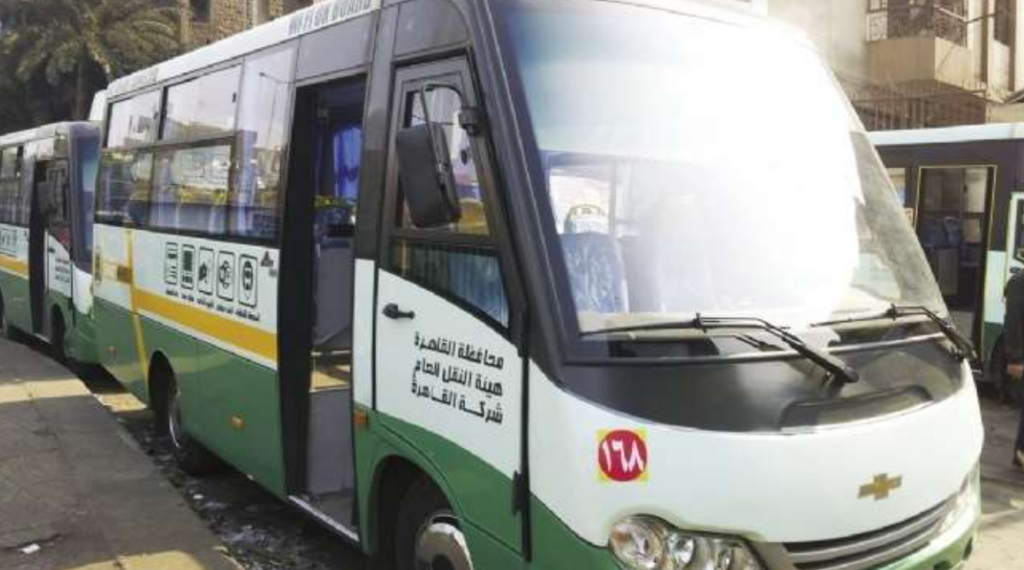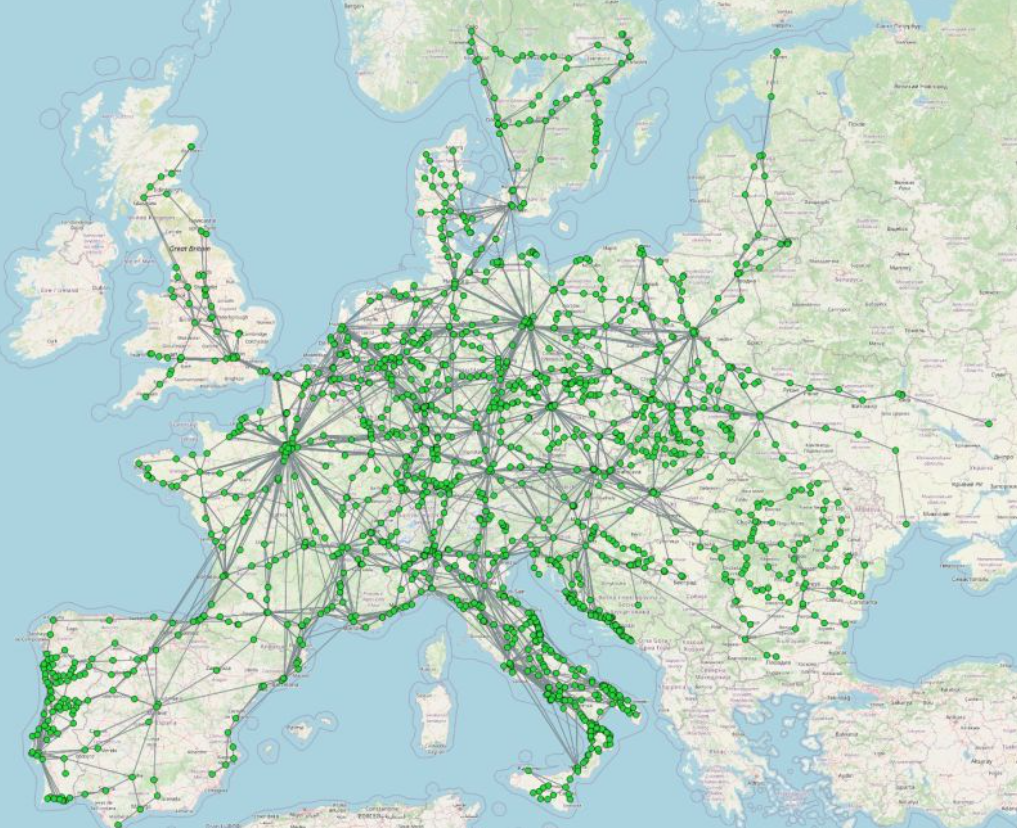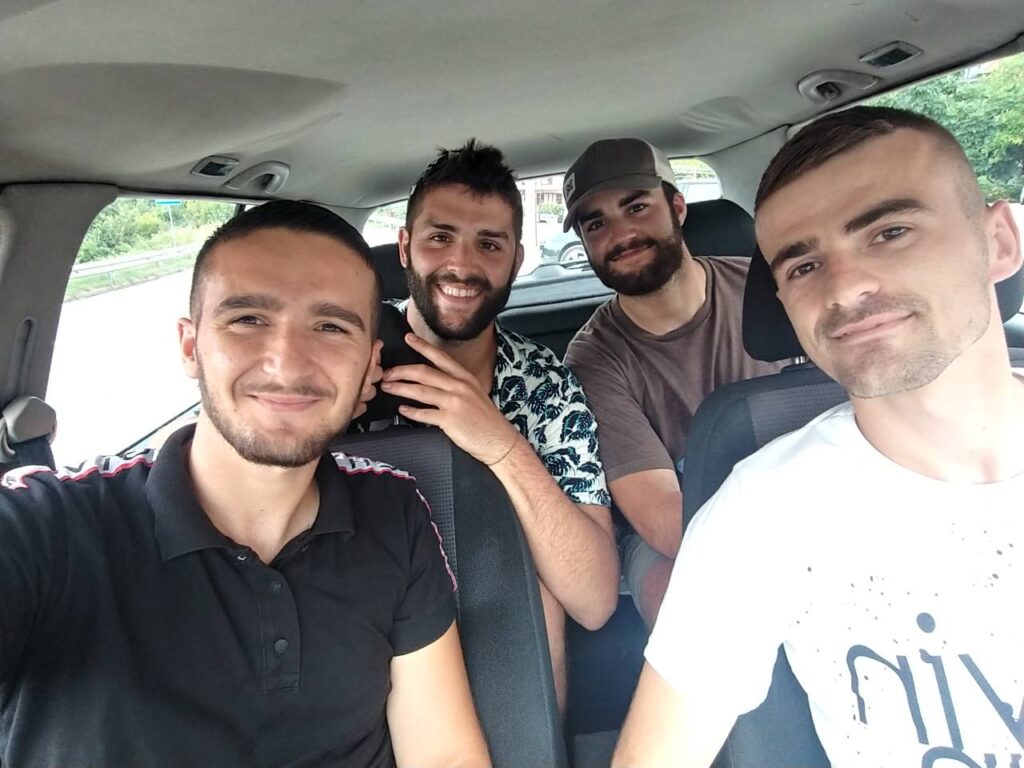by Eric Schenck
 I love public transportation. As an American, I know that makes me weird. Over the years, from both family and friends, I’ve heard many complaints about it:
I love public transportation. As an American, I know that makes me weird. Over the years, from both family and friends, I’ve heard many complaints about it:
- Public transportation is dirty
- Public transportation is slow
- The people using it are weirdos
- Why bother when I have a car
These are all perfectly valid but I’m still convinced that public transportation is something everybody should try. And in this article – I’d like to show you why. What follows are six different modes of “public transportation” I’ve enjoyed, what they’ve taught me, and why maybe, just maybe, you should give public transportation a go yourself.
Egyptian Taxis
My first real experience with public transportation is taxis in Egypt. It starts weird. I don’t know that you’re supposed to tell the driver where you want to go before you hop in (in Egypt, they can and often do refuse). This leads to a few awkward conversations.
I learn fast though. Within just a few weeks I’ve got it down, and like many Egyptians, taking a taxi simply becomes a routine.
Living in Cairo and regularly flagging down taxi drivers makes me feel like I’m some banker in New York. But instead of banking, I’m going back and forth between English lessons. And instead of the bright lights of New York, I’m surrounded by women in burqas and giant mosques.
Taxi rides are forever intertwined with my time in Egypt. I lived in Cairo for three years. About 1,000 days. Probably something closer to 2,000 taxi rides.
Almost always a man. Recitings of the Koran playing over the radio. Looking at the Nile go by. Seat belts that either don’t work, or don’t exist. These are the things that will forever define Egyptian taxis for me.
Over the three years, I get good enough at Egyptian Arabic to talk about most things. Our chats cover a wide range:
- How terrible it is that the metro ticket prices keep going up
- When I’m planning on converting to Islam
- What I think of Egyptian women
- Why my clothing style is out of date
- Why that’s not really a problem because they know a tailor if I’m interested
- What my favorite Egyptian food is
- Why Abdel Fattah El-Sisi is a great man
- Why Abdel Fattah El-Sisi is a terrible man
- What America is like
- If I would like a bite of their sandwich
More than most things, these conversations teach me a ton about Egyptian culture. I do pay for it though: 1,000 days, 2,000 taxi rides, 3,000 cigarettes.
For me, Egyptian taxis become a cultured grandpa that still manages to stay in shape. They are fast when they want to be, but more often than not, the traffic slows them down. They will also gladly teach you something about the world…
As long as you are willing to share a smoke with them.
Egyptian Minibuses
If Egyptian taxis are your grandpa that you love to see at family reunions…
Minibuses are your crazy cousin that used to be addicted to meth and has probably spent some time in the clink. You can’t escape them. You see them at the family get-together, and you try as hard as you can to avoid eye contact. No matter what you do, though, they’ll still find you.
The minibuses in Egypt usually have somewhere between six and ten rows, with two seats on each side. They come in all different colors, and drivers will often decorate them to their liking.

Minibuses scream in your face. They always have people tumbling in and out of them. There is usually a guy helping the driver. He hangs out the side, shouts their destination, and takes your payment as you get off. Half the time you have to throw coins at him: Egypt moves fast, and time is money.
The main benefit of riding these is that they’re big enough to allow most of Egypt’s absurdities. An old lady carrying a giant sack of potatoes on her head. A little boy with his donkey on a leash. A teenager with a motorcycle that has a flat tire, intent on somehow getting it home (the driver helps him lug it on).
These are all things I’ve seen on a minibus – with their wide aisles, everything is possible.
If there is a form of transportation that defines the utter chaos of Cairo, it’s probably the humble minibus. You can’t help but fall in love with them. The drivers of these monsters almost never have a care in the world. Whether speed limits, traffic jams, or people screaming at them to slow down..
They’ll find a way around it.
Being a passenger on one gives you a kind of power. You barrel through the streets of Egypt, and you can’t help but feel like you’re on some kind of dragon. People walking the streets steer clear. All other vehicles give you the right of way. Even the ever-present Egyptian military officer waves you through.
And at night? The lights of a city that never sleeps adds a dose of thrills. As I say in my book about living in Cairo: “A 3 AM ride down a mostly empty street in Egypt, with a techno version of an Amr Diab song blasting in my ear: this is the closest I will get to religious ecstasy.”
It’s a conviction I will die with: if you want to understand the Egyptian mindset, take a couple rides in a minibus. That will teach you more than any textbook ever could.
FlixBus
After I move to Germany, I say goodbye to “interesting” forms of transport and opt for the more “boring” ones. One example is FlixBus.
Long, green, and a complete roll of the dice who is going to be accompanying you, the FlixBus is Europe’s preferred method of long distance travel. For five years in Europe, I ride one countless times.
From the Netherlands to Germany. From Slovakia to Poland. Through the gently rolling hills of France, all the way to the massive mountains of Switzerland.
Each trip is quirky in its own way. Almost always, though, there are similarities:
- The driver will be a Bulgarian that loves cigarettes.
- The toilet will kind of work, but you’ll have to flush it twice.
- Somebody will eat something that smells up the whole bus (usually hard-boiled eggs).
To say that FlixBus is everywhere in Europe is no exaggeration. Look at the routes (current as of 2023) that the company runs, and you discover an intricate spider web.

The most charming (and annoying) thing about exploring Europe with a FlixBus is the locations they designate as “bus transfers”. Most long distance FlixBus routes will, at some point, end up at one of these.
These are the equivalent of airport layovers. People of all shapes, colors, and sizes will get off one bus, stumble around, and then about 45 minutes later, their second bus will take off.
Inevitably, these places function like some kind of airport duty free. They are designed to sell. There are always a few overpriced restaurants and some tacky souvenir shops. The thing is, you’re so happy to be walking around after six hours on a bus that you’ll buy just about anything.
The major flaw of these bus transfer places is that nobody ever seems to know where you’re supposed to go. You’d think with the logistical genius of organizing thousands of bus routes a day, they would figure this out. Such is not the case. You’ll get your first ride just fine. But the second one after the transfer? You’re on your own.
I wonder how many hapless tourists have been left behind by a FlixBus. If this were the U.S. lawsuits would have long ago shuttered the company. But not here.
And thank God for that. I imagine all the young people with wanderlust that visit or live in Europe (and let’s be honest, long distance trips on a smelly bus are a young person’s game). For them (and for me), FlixBus is a miracle.
Get a backpack, bring some snacks, and away you go.
German Trains
From 2018 to 2023, FlixBus is what I take when I’m outside Germany. But when I’m in the motherland? Trains become a natural part of my routine…just like they are for millions of Germans.
I’m probably 50 years early, but Germany turns me into a train schedule nerd. Even if I’m not going anywhere, it’s fun to go to a Hauptbahnhof (main station) and look at the giant screen at the entrance.

Where are all these trains going? What kind of adventures are they allowing people to have? And most importantly… why are they always late?
This in itself gives me an insight into the contradiction of “German-ness.” German trains seem to be delayed about half the time… but the people riding them never are. What superpower do Germans secretly possess that makes this possible? It’s the first thing (of many) that will confuse me about my new home. For an American, though, a functioning train system that can take you just about anywhere is mind-boggling – regardless of how late they might be.
German trains show me just how beautiful Germany is. You look out the window and see nothing but green. There are lakes and rivers everywhere. Exit at any stop, on just about any given route, and you will feel like you’ve stepped into a fantasy novel. The seemingly constant appearance of castles certainly helps.
The greatest thing about German trains is how omnipresent they are in the lives of their citizens. This shows you the people that the country is made of. Take one in the morning, and you will see businessmen going to work, teachers checking their phones, little kids with bikes that are dreading the school day, and old people on their way to a mid-day hike.
The German train system also gives me a taste of what convenient (and quick) travel through the continent is like. I’m hardly the first person to notice it, but there is something special about Europe. If I have 50 bucks and a few hours of free time, I can end up in Paris. Or Amsterdam. Or Warsaw.
And German trains are always happy to take me there…
Even if I’m a little late arriving.
Greyhound
They say you haven’t seen America until you’ve taken a Greyhound. For a while I believed that. Not from any personal experience, but from the horror stories I had heard second-hand.
Greyhound has a certain reputation. With 60-hour cross-country rides and a bus packed full of insane people, how could you not?
My own experiences (until recently) were the exact opposite. Relatively quick, comfortable enough, and assuming you had something to eat up the time, more convenient than flying. Plus, the people all seemed normal. Where had this reputation come from?
But then it happened. I took a Greyhound from Salt Lake City to Denver in January of 2025 and we got caught in the snow. We eventually got out, but the delay must have sent out some kind of bat signal to weirdos.
Over the next five hours of trudging through ice, these are just a few of the people that got on:
- A guy wearing a hardhat who fell asleep in the very back right in front of the bathroom door
- A man with the biggest beard I have ever seen that kept talking to himself…and turning around to give me a thumbs up
- An old lady that would periodically scream about pickles
I did arrive in Denver, eventually. In one piece, with minimal emotional scarring… but a little less convinced in the decency of my fellow man. At this point, I know that saying is only partly true. You’ll definitely see a part of America when you take a Greyhound…
I just don’t know if it’s the part you should prioritize.
Hitchhiking
While not technically “public transportation”, I do think hitchhiking deserves an honorable mention.
My first experience with it comes in 2016. Over four days, eleven drivers take me almost 1,000 miles from Fort Worth to Tucson. I get a nice dose of humanity. One guy has thousands of beer cans in the back of his truck and doesn’t say a word to me. A pair of Mexican sisters that don’t speak English laugh at my Spanish, and scream with delight when I take a selfie of us sitting together.
I’m no expert, but I have noticed that there are two wonderful parts about hitchhiking:
The first thing is what happens when nobody picks you up.
You have been denied. Over and over and over again. The first time that a giant SUV with no passengers speeds by you, you want to cry. After 20 minutes of that you start to get angry. By an hour in, you are laughing about it.
You’ve been rejected more in 60 minutes than the previous ten years, and all of life turns into a joke. At that point, nothing can touch you.
The second thing is what happens when somebody does.
Say what you will about how terrible your fellow humans are (looking at you Greyhound), but there are wonderful people out there. Strange, but wonderful. They don’t know you, but they saw somebody that needed help, and that was enough. Statistically, they are almost certainly safer ignoring me on the side of the road…
But for some people, that doesn’t matter.
And the conversations. You are never going to see them again, and they’re never going to see you. That brings a kind of freedom that is difficult to find. You can both say exactly what you want. And usually, you do.
I’ve probably hitchhiked with ~30 different people at this point, and about half of those have taught me something new. A 50% success rate for that kind of insight is remarkable.
More than most things, hitchhiking forces a kind of vulnerability on you. You’re giving yourself over to a stranger, and just hoping they’re one of the good ones. As I get older that sounds less and less desirable. But I do think a certain amount of it is important. And when you get to share that with other people…
That’s when the magic happens.
My little brother’s first time hitchhiking was during our eastern Europe trip in 2018. Two guys around our age eventually did pick us up. They were Albanian and drove us for three hours to Montenegro.

I don’t remember their names, and I don’t even remember exactly what we talked about, but I do remember one thing: after five minutes I knew we had two of the good ones. We laughed and listened to shitty rap music. We watched the brilliant landscape of southern Montenegro outside the window. We connected with two strangers…
And made it to our destination with lives a little more enriched because of it.
That’s the kind of feeling that no amount of money can buy.
My Hope For You…
…is that you give it a try.
Public transportation is dirty, and it is slow. The people using it are weirdos, and using a car instead does make more sense in just about every way…
But maybe that’s the point.
The world is just too fast now, and we all seem to be convinced it’s full of people that hate us. But that’s not true – and public transportation proves it. Trains and buses and the kindness of strangers forces you to slow down, to appreciate going from point A to point B, and is something you’ll almost always get a story out of…
And what’s better than that?
***
Enjoying the content on 3QD? Help keep us going by donating now.
